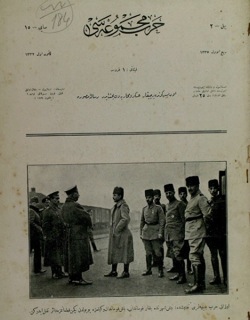 Before the outbreak of World War, Romania comprised three main regions: Walachia, Moldavia, and Dobruja. The former two boasted a predominantly Romanian population, while Dobruja was marked by ethnic diversity, with a significant Muslim presence and a Romanian minority. Additionally, there were territories beyond Romania's borders, such as Bessarabia, Southern Bukovina, and Transylvania, each home to substantial Romanian populations. The aspiration of Romanian nationalists was to unite these regions under a Romanian state where the Romanian language held sway.
Before the outbreak of World War, Romania comprised three main regions: Walachia, Moldavia, and Dobruja. The former two boasted a predominantly Romanian population, while Dobruja was marked by ethnic diversity, with a significant Muslim presence and a Romanian minority. Additionally, there were territories beyond Romania's borders, such as Bessarabia, Southern Bukovina, and Transylvania, each home to substantial Romanian populations. The aspiration of Romanian nationalists was to unite these regions under a Romanian state where the Romanian language held sway.
 Amidst sympathies for France, Britain, and Russia, Romania opted for armed neutrality in the initial war years. Both the Central Powers and the Entente sought to pull Romania to their side, dangling promises of territorial acquisitions. The Central Powers offered Bukovina and Bessarabia, to be carved from Tsarist Russia, while the Entente pledged Transylvania, to be separated from the Austro-Hungarian Empire.
Amidst sympathies for France, Britain, and Russia, Romania opted for armed neutrality in the initial war years. Both the Central Powers and the Entente sought to pull Romania to their side, dangling promises of territorial acquisitions. The Central Powers offered Bukovina and Bessarabia, to be carved from Tsarist Russia, while the Entente pledged Transylvania, to be separated from the Austro-Hungarian Empire.
It wasn't until 17 August 1916, that Romania aligned itself with the Entente, subsequently declaring war against the Central Powers ten days later. A force of 750,000 men mobilized along the northern Carpathian Mountains and the southern border in support of Romania's newfound stance.

In their quest for swift triumph, Romanian forces breached the Austro-Hungarian border, claiming a substantial portion of Transylvanian soil. This strategic advance positioned them to strike the Austro-Hungarian mountainous defenses in the Carpathians from an unexpected angle. Responding to this challenge, the German High Command not only aimed to safeguard Austro-Hungarian territories but also discerned an opportunity to obliterate Romania, securing a decisive Eastern European advantage.
The German strategy unfolded as a meticulous double encirclement. The Austro-Hungarian Fourth Army would confront the Romanian forces in the north, while General Erich von Falkenhayn's German Ninth Army embarked on a southward march, setting its sights on the Romanian capital, Bucharest. Simultaneously, a novel Danube Army, comprising German, Bulgarian, and Turkish units under the seasoned command of Field Marshal August von Mackensen, prepared to advance northward within the Dobruja region.
The Road to Romania

The decision to dispatch Turkish forces for a joint campaign in Romania was a deliberate move, anticipated due to prior troop movements in Galicia by the Ottoman High Command. The selected units for the Romanian campaign included the VI Corps, under the command of General Hilmi Pasha, the 15th Division led by Lieutenant Colonel Hamdi Bey, and the 25th Division commanded by Colonel Şükrü Ali Bey. Enver Pasha had issued orders for their readiness even before the official declaration of war by Romania.
The Turkish units designated for the Romanian expedition assembled in Edirne and Bakırköy, a district of Istanbul. The 25th Division was slated for transport to Pravade, while the 15th Division was destined for Varna. Ultimately, both divisions would converge at Dokuzağaç, the rendezvous point of the VI Corps, situated at the heart of Dobruja, just 50 kilometers north of the Romania-Bulgaria border. The strategic positioning indicated meticulous planning and coordination for the upcoming campaign.

In the intricate chessboard of wartime strategy, Mackensen meticulously devised his offensive plan, slated for 1 September 1916. Yet, the wheels of war were often hampered by the unforgiving intricacies of logistics and the dilapidated state of northern Bulgaria's railroads. This posed an insurmountable challenge for the Turkish units, delaying their timely arrival at the front. It wasn't until 4 September that the 75th Regiment of the 25th Division reached Pravade, marking the commencement of their journey. With efficiency defying the odds, the entrainment of Turkish forces unfolded over a fortnight, culminating in their readiness for action on 19 September.

The stage was set for the Turkish forces' inaugural act in Romania on 24 September. The 25th Division, flanked by the gallant Bulgarian cavalry on the right and the steadfast Bulgarian 6th Division on the left, received their orders to assail the town of Amuzaca. At the stroke of 9:15 am, artillery fire heralded the commencement of their grand performance.
By 3:00 pm, the 75th Regiment had successfully infiltrated Amuzaca, a testament to their strategic prowess. In the aftermath, Colonel Şükrü Ali Bey transmitted a cable to General Toshev, the Bulgarian commander, proposing a further northern advance. Regrettably, this entreaty found no favour, and the Turkish units were instructed to consolidate their gains, establishing a defensive bastion.
Simultaneously, the 74th Regiment weathered the storm of a relentless Romanian counter-attack, enduring substantial casualties. The toll of the day's fierce ballet on the 25th Division was staggering – 415 dead, 2226 wounded, and 893 missing in action. The echoes of victory resonated, but the cost paid rendered it a pyrrhic triumph for the Turks, a stark reminder of the merciless toll exacted by the theatre of war.
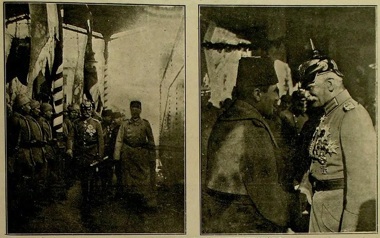
Recognizing the hasty incursion into Transylvania as a strategic blunder, exposing them to Mackensen's impending offensive, the Romanians devised a plan to regain the initiative in Dobruja. Under the leadership of General Averescu, they formed the Southern Group of Armies, launching a long-anticipated offensive on 1 October across both the Dobruja and Danube sectors.
In Dobruja, the Romanian assault targeted the Turkish 25th Division, bolstered by the recently arrived 15th Division. After a day of fierce engagement, the Turks successfully maintained a defensive position, keeping the Romanians at bay merely two kilometers from their entrenched lines. A counter-offensive was envisaged for the night, yet the snowfall disrupted communication between Turkish units, rendering the planned repulsion unattainable.

In the rugged expanse of Dobruja, a relentless battle unfolded over the span of seven days. The 25th Division, comprising the stalwart 56th, 59th, and 75th regiments, stood shoulder to shoulder, forming a formidable frontline that stretched ten kilometers. The Romanians, though valiant, faced a formidable setback, with 812 lives lost, 2893 wounded, and 952 missing in action.
Yet, the spirit among the Turkish units remained resolute. Their morale soared not only due to repelling the Romanian assaults but also with the arrival of General Hilmi Pasha to assume command, bolstered further by the full combat readiness of the 15th Division. In the midst of Dobruja's tumult, the stage was set for a decisive turn of events.
Simultaneously, in the Danube sector, Romanian forces undertook a daring river crossing between Totrakan and Russe. However, the ensuing offensive faltered, compelling them to retreat to their initial positions. The theatre of war unfolded with strategic intricacies, marking a pivotal moment in the unfolding tapestry of conflict.
Renewed Offensive
Disappointment hung heavy in the Romanian ranks, setting the stage for Mackensen's decisive move. The seasoned commander strategically divided the theatre of combat into two distinct groups, orchestrating the positioning of his forces with precision. The Eastern Group fell under the command of Bulgarian General Kantarchiev, while General Toshev took charge of the Western Group, where the Turkish VI Corps stood ready. Mackensen's calculated plan aimed to identify the enemy, cutting off any avenue of retreat with the Western Group and launching a relentless attack from the left flank with the Eastern Group.
As the morning sun cast its light on 19 October 1916, the offensive unfolded according to Mackensen's meticulous design. Turkish regiments, resilient and determined, repelled the advance guards of the Romanian forces on the very first day. In a mere three days, the Turks, with remarkable strategic prowess, shattered the Romanian defenses, surging forward by 20 kilometers and accomplishing their predefined objectives.
The Romanians, facing the stark reality that Gobadin could not be held, swiftly adapted. Some units traversed the river in search of refuge west of the Danube. Simultaneously, those remaining on the eastern bank initiated a northward retreat, relentlessly pursued by the relentless Turkish VI Corps. The theatre of war echoed with the footsteps of a tactical dance, each move spelling out the fate of nations.
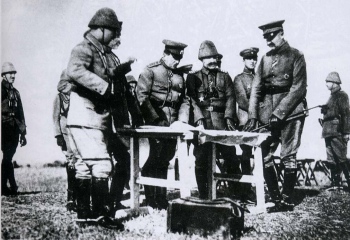
On the morning of 24 October, the northward advance came to a halt with a direct message from General Toshev to Hilmi Pasha. The new directive ordered the Turkish forces to shift their movement westward, setting their sights on the town of Chernovoda, nestled along the banks of the Danube. Swiftly complying with the orders, the Turkish forces reached the Danube the following day, strategically encircling the Romanian forces yet to traverse the river. As the offensive unfolded, culminating on 27 October, the Turkish VI Corps had not only penetrated deep into Romanian territory but also witnessed the Bulgarians securing the vital narrow stretch of Dobruja between the Black Sea and the Danube. The toll of the Dobruja operation weighed heavily on the Turkish VI Corps, amounting to 1864 casualties, with 7720 wounded and 2020 missing.
Mackensen's subsequent strategic move envisioned the Western Group—comprising the Turkish VI Corps, German 217th Division, and Bulgarian 1st Division—crossing the Danube. This amalgamation aimed to unite with the units advancing north through Wallachia, delivering the decisive blow to the Romanian forces. However, this well-laid plan faced a significant setback when intelligence revealed a reinforced Romanian presence in Dobruja, with Russian reinforcements en route to bolster their ranks.

In a defensive stance, the VI Corps fortified their position, entrenching themselves firmly. On 17 November, Russian forces successfully maneuvered past the Bulgarians, launching an assault against the Turkish lines. Despite their efforts, the attack faltered, and subsequent renewed assaults on the 1 and 3 December met similar failure. The Turks resiliently held their ground, and the tides turned on 8 December when they seized the initiative. Over a span of about ten days, they relentlessly pushed back the Russian forces, reclaiming territory and advancing approximately 50 kilometers. Their progress led them to the elevated vantage points overlooking the Danube delta, culminating in the capture of the town of Isecca on the Danube's banks by a swift cavalry unit.
Eager to complete the encirclement of the Romanians, Mackensen sought the Turks' cooperation. Their new directive was to shift southward, toward Harsovo, another Danube-side town. Yielding the recently gained terrain to the Bulgarians, the Turks commenced their march southwards. Embarking on the first day of the new year in 1917, after enduring a challenging 15-day journey covering more than 200 kilometers in harsh winter conditions, the 15th Division and the VI Corps headquarters initiated the river crossing. The 25th Division followed suit, arriving on 11 January and commencing their Danube crossing a week later.
More Turkish Troops to Romania

Mackensen recognized the imperative of reinforcing the Turkish front and promptly requisitioned additional Turkish forces. Responding with empathy, Enver Pasha and the Ottoman High Command resolved to dispatch an extra division to Romania. The chosen unit was the 26th Division, a formidable assembly comprising the 73rd, 76th, and 78th regiments, led by Lieutenant Colonel Hamdi Bey. This augmentation swelled the Turkish contingent in Romania to a formidable 39 thousand troops.
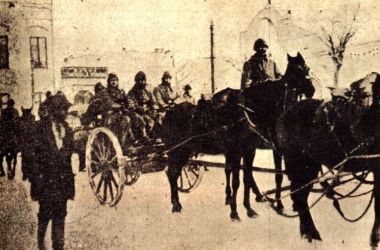
On 9 November 1916, the 26th Division commenced its journey from Edirne. After traversing the terrain, it reached Sistova and successfully crossed the Danube River on 25 November. Integrating seamlessly with Mackensen's Danube Army, which also featured the German 217th Division and a German cavalry division, the Turkish forces advanced northeastward towards Bucharest. Concurrently, General Falkenhayn's German Ninth Army embarked on a southward and eastward march through Walachia, while the Austro-Hungarian First Army endeavored to overcome Romanian resistance nestled in the Carpathian Mountains.
On 27 November 1916, amidst the rugged terrain near the town of Marzanesti, the 26th Division of the Ottoman forces faced the Romanians in their first encounter. The skirmish concluded in triumph for the Turks, propelling them forward on their relentless march. Simultaneously, in the realm of reconnaissance, Field Marshal August von Mackensen discerned ominous signs of a looming Romanian onslaught against the Danube Army. Reacting with strategic acumen, he entrusted the 26th Division and the stalwart German cavalry to safeguard the vulnerable flanks of his military apparatus.
The Romanian offensive was launched on 1 December 1916. Along the Tarnovo-Draganesti road, the indomitable Turkish 73rd Regiment locked horns with the adversary, while the resolute German cavalry endeavored to stem the tide in the Lestanau region. Confronted by the overwhelming force of the Romanians, Lieutenant Colonel Hamdi Bey, displaying tactical sagacity, summoned the 76th Regiment into the fray. After a protracted day of relentless combat, the Romanian forces relinquished their hold on Tarnovo, compelled to embark on a strategic retreat. This pivotal clash marked a significant juncture on the path to Bucharest, albeit at the cost of 87 Turkish lives, 524 wounded, and 357 missing in action.
The next day, the village of Balaria was captured, the 78th Regiment standing as the linchpin to this triumph. A path to Bucharest unfolded, and, come 4 December, Falkenhayn and Mackensen’s forces converged. In a mere four days hence, the procession echoed through Bucharest's avenues, the 78th Regiment proudly partaking in the victorious parade.
With Bucharest lost, Romanian forces retreated northward, pursued by the Danube Army. The 26th Division, held in reserve, followed closely. On 16 December, Enver Pasha scrutinized the division in Balasiul.
Romanian resistance solidified along the Gurgueti-Romanul-Tisileşti line, thwarting Danube Army assaults. Simultaneously, the VI Corps and the 15th Division, crossing the river on 1 January 1917, amalgamated with the Danube Army.
On the eve of 4/5 January General Averescu orchestrated a withdrawal north of the Sereth River. Hilmi Pasha, with his corps now three divisions strong, issued orders the ensuing day. The 15th and 26th Divisions were to assail north of Ibrail, a town on the Sereth's banks. The Turks secured the heights commanding the river, yet staunch opposition arose. A stalemate ensued, prompting both Turkish forces and the Danube Army to fortify their positions south of the Sereth. Though scant Romanian and Russian units lingered, they evidently vexed Mackensen's forces.
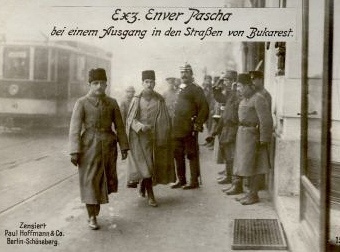
On 26 March 1917, the command echoed through the ranks of the 26th Division – a return to Istanbul was ordered. Commencing their journey on 1 April from Bucharest, the division steadily rolled homeward, concluding the entrainment by month's end. The Romanian theatre of war fell into an eerie silence for the remainder of the year. While minor incidents stirred in August and September, they were but ripples in the broader narrative. The Romanian campaign had drawn its curtain.
As the crisp air of 30 September settled, the directive reached the 25th Division – the homeward path was now theirs to tread. Swiftly executing the entrainment, the division found itself back within the embrace of Istanbul on 4 January 1918. Initially, the Ottoman High Command entertained the notion of the 46th Division as a replacement, but that plan, like so many, met abandonment.
Nestled along the Danube's shores, the headquarters of the VI Corps and the 15th Division maintained their vigil until April 1918. With the dawn of the next month, they embarked on vessels setting sail from the port of Constanta, navigating the Black Sea's expanse towards Batumi. Their mission awaited them – a deployment against the Russians in the rugged expanse of the Caucasus.
In the vast expanse of the Eastern Front during the Great War, Turkish forces played a pivotal role in supporting the Central Powers, particularly in the challenging theater of Romania. The warriors from the Ottoman Empire, facing both Romanians and Russians, showcased not just bravery but unwavering reliability in the crucible of combat. Their mettle was of particular significance to Field Marshal Mackensen, who valued their ability to endure prolonged and arduous marches through the harsh winter landscapes.
Two Turkish divisions stood firm on Romanian soil for eighteen months, while a third division gallantly held its ground for a formidable two years. Despite their prolonged presence, the actual time spent in the crucible of battle amounted to a mere five months. These elite divisions, in moments of conflict, bore the brunt of severe casualties. In the fateful month of March 1917, as the Turkish forces advanced toward the Sereth River, their total strength numbered around 21 thousand, yet the toll of war saw casualties soar to 18 thousand.
A poignant realization emerges – these seasoned divisions, marked by their endurance and sacrifice, might have been more strategically employed elsewhere. The exigencies of other theaters, notably Mesopotamia and Palestine, yearned for the presence of these seasoned Turkish troops. The narrative of their exploits in Romania, etched in the annals of history, reveals a saga of resilience and sacrifice that echoed across the vast landscapes of the Eastern Front.
![]()
Sources consulted:
- Ertem, Ş., “Avrupa’da Yüz Bin Türk Askeri” (Hundred Thousand Turkish Soldiers in Europe), Kastaş Yayınları, Istanbul, 1992.
- Official History, “Birinci Dünya Savaşı’nda Türk Harbi – Avrupa Cepheleri” (Turkish Battles in the First World War – European Fronts), Genelkurmay Yayınları, Ankara, 1996.
PAGE LAST UPDATED ON 3 JANUARY 2024